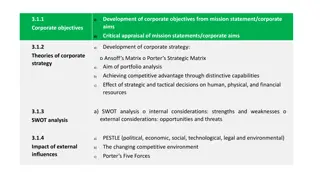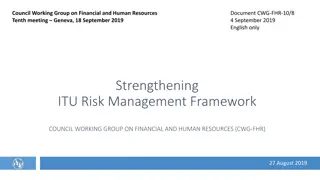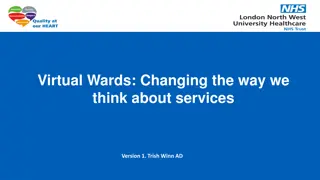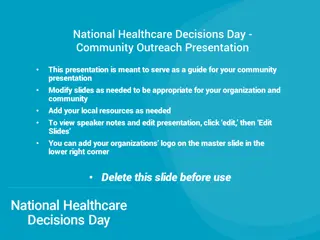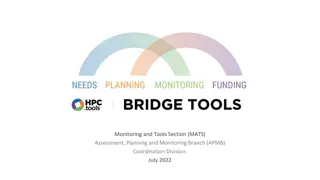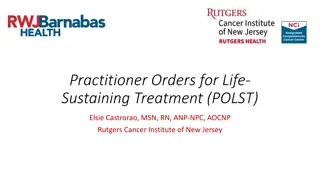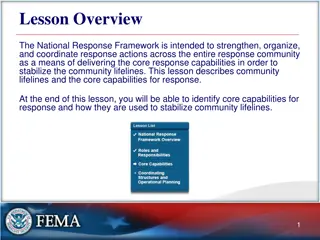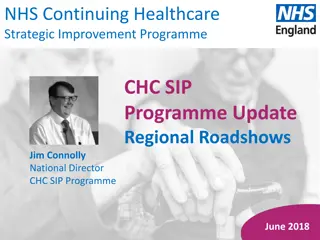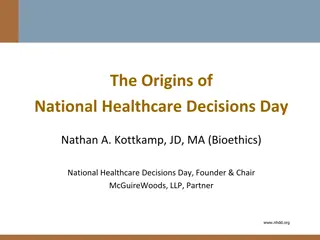Strategic and Operational Planning in Healthcare: Navigating Changing Landscapes and Community Expectations
Articulating a strategic plan in healthcare is vital to address the evolving landscape and meet community expectations. Factors such as rapid population growth, changing healthcare needs, rising costs, and advances in digital health highlight the need for innovative approaches. Key considerations include responding to current challenges, recognizing the role of government policies, and aligning with community needs to ensure sustainable and effective healthcare delivery.
Download Presentation

Please find below an Image/Link to download the presentation.
The content on the website is provided AS IS for your information and personal use only. It may not be sold, licensed, or shared on other websites without obtaining consent from the author. Download presentation by click this link. If you encounter any issues during the download, it is possible that the publisher has removed the file from their server.
E N D
Presentation Transcript
Strategic and Operational Planning in a health service KPIs Role of Chief Executive Risk
Why have a Strategic Plan? A strategic plan is an opportunity to articulate a vision, create momentum and shared accountability in creating the organisation s future, instead of simply reacting to the environment.
Developing a Strategic Plan Consider the current environment Consider emerging challenges: globally, nationally and locally Articulate a desired future state for the organisation Recognise the health service is part of a health care system Recognise role of government policy, both state and federal Role of Statement of Priorities (SOP)
Environment - Changing landscape Rapid population growth (Victoria) Changing healthcare needs: Ageing population, dementia, co- morbidities (obesity, diabetes), greater complexity of healthcare needs, increasing mental health, growth in emergency presentations and more frailty - requires a new and innovative approach to healthcare delivery Rising costs of healthcare, greater than increase in population: 10% GDP - unsustainable Role of Digital Health: Rapid advances in technology, leading to changes in treatment, as well as changes in how healthcare is and can be delivered
Environment-Changing landscape The role of the Melbourne Biomedical Precinct Introduction of the Medical Research Future Fund (MRFF) Need to grow Indigenous Health Research Royal Commissions into Aged Care and Mental Health Need to be sustainable financial and environment
Environment-Changing landscape In recent years very significant change in society s expectations of workplace culture Greater expectation that patients are integral to decisions about their care and equal partners in how care is delivered
Develop Strategic Plan based on: Response to our environment/changing landscape/community expectations Needs of community we serve Changing needs of our patients Current strengths of the health service Opportunities with which the health service wishes to engage Expectations of government (state), both policy directions and SOP
Strategic Goals A great place to work Realising the potential of the Melbourne Biomedical Precinct Becoming a digital health service Remain Home First sustainable and A great place to receive care
Great place to work Safety Culture Health and Wellbeing Learning environment Great place to receive care Safe, timely, effective(outcomes) and patient centred (STEP)
Realising the potential of the MBP Delivery of care across the 4 Parkville Health Services Optimising research opportunities across the MRIs and University of Melbourne
Becoming a Digital health Service EMR Digitise support processes/services Delivery of health care (telehealth)
Remain sustainable Both environmental and financial Value based healthcare efficient use of resources providing patients with outcomes they value Increase impact of RMHF
Home First Optimise care outside the 4 walls of the hospital Keep patients (frequent attenders) well in the community through case management Optimise use of HITH (acute and subacute) either as part or all of care
Statement of Priorities Developed by DHHS in consultation with Health Service Annual priorities and targets to be achieved Includes: Strategic priorities Quality KPIs Financial KPIs Activity KPIs Signed by Minister and Board Chair
Strategic plan is operationalised through the annual operational plan or business plan with success measured by a range of KPIs
Annual Operational/Business Plan Based on the 5 year Strategic Plan and the annual Statement of Priorities Operational Plan: Range of initiatives reflecting implementation of the 5 strategic goals as well as initiatives to achieve the agreed KPIs in the SOP
Annual Operational Plan Range of KPIs: Emergency activity and access Elective surgery activity and access Outpatients activity and access Quality: infection, readmission rates, HH, clinical outcomes, patient experience measures People and Culture: annual leave, personal leave, OVA, OH&S, staff engagement (PMS) Financial: WIES, financial performance Progress in achieving strategic goals (eg EMR implementaion, Research Strategy, Safety Culture, Environmental Strategy, Financial Sustainability Plan, Home-based care)
Role of Chief Executive Appointed by the Health Service Board and Secretary DHHS 5 year contract, limit 10 years CEO reports to the Board CEO reports to DHHS
Role of Chief Executive Lead the organisation Responsible for operational and strategic performance Develop Strategic Plan Develop and deliver annual Operational Plan Ensure safe workplace (both physically and psychologically) Ensure delivery of high quality clinical care Ensure financial and environmental sustainability
Risk Management Enterprise Risk Clinical Risk divisional and departmental and clinical care Interagency Risk Project Risks Risk appetite Enterprise risks are monitored by the Executive and Board Clinical risks monitored by Quality Committee Project risks monitored by PMO













